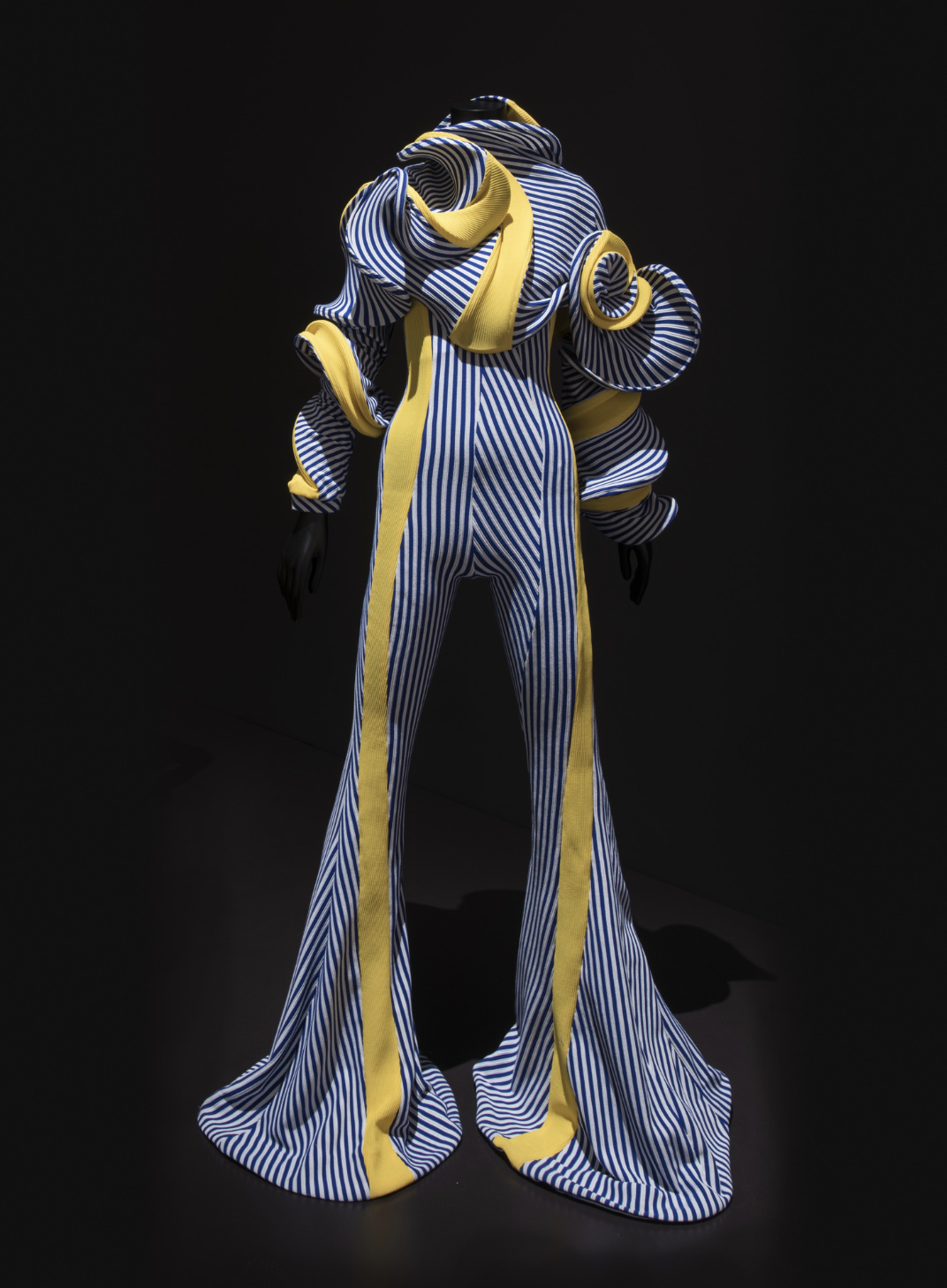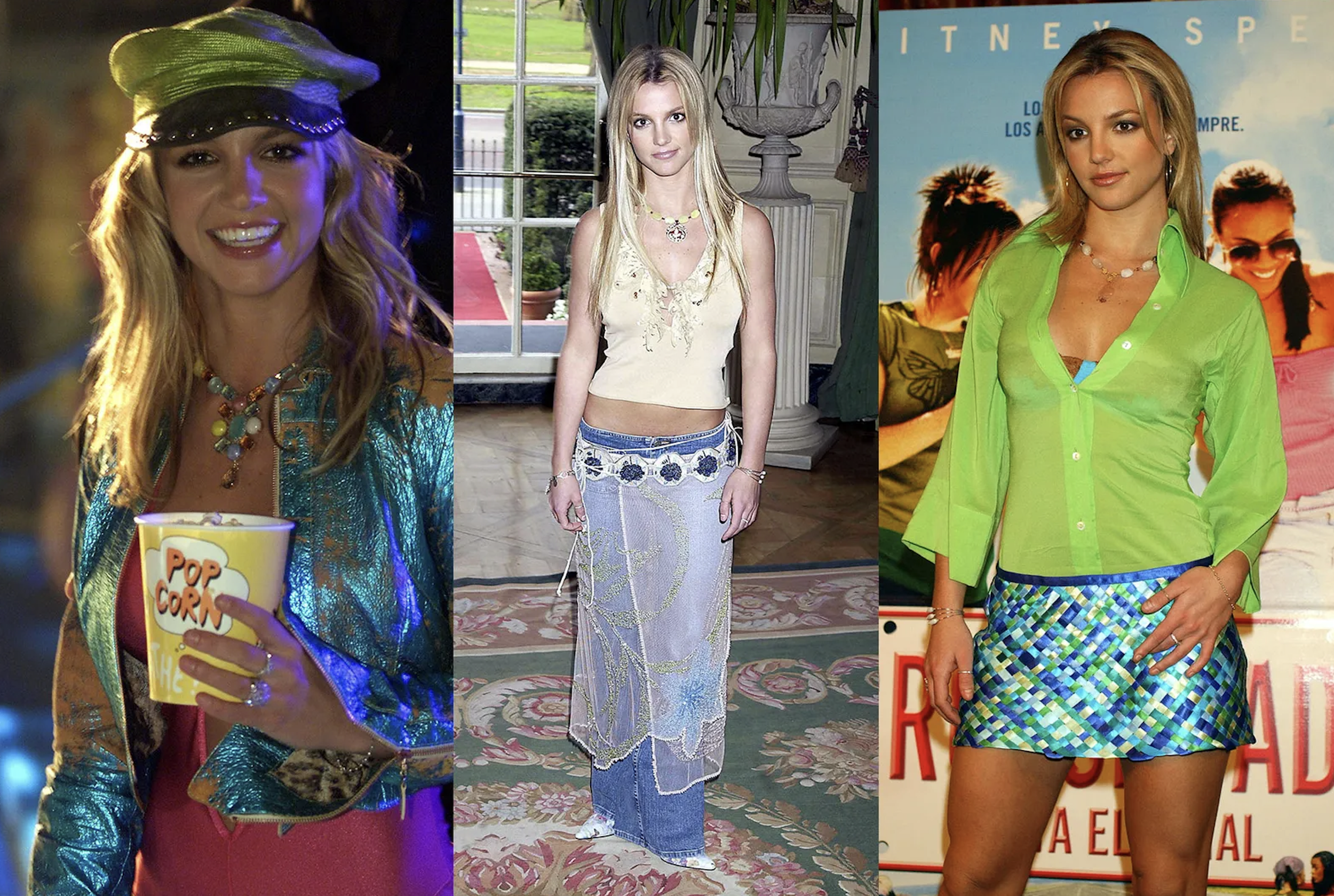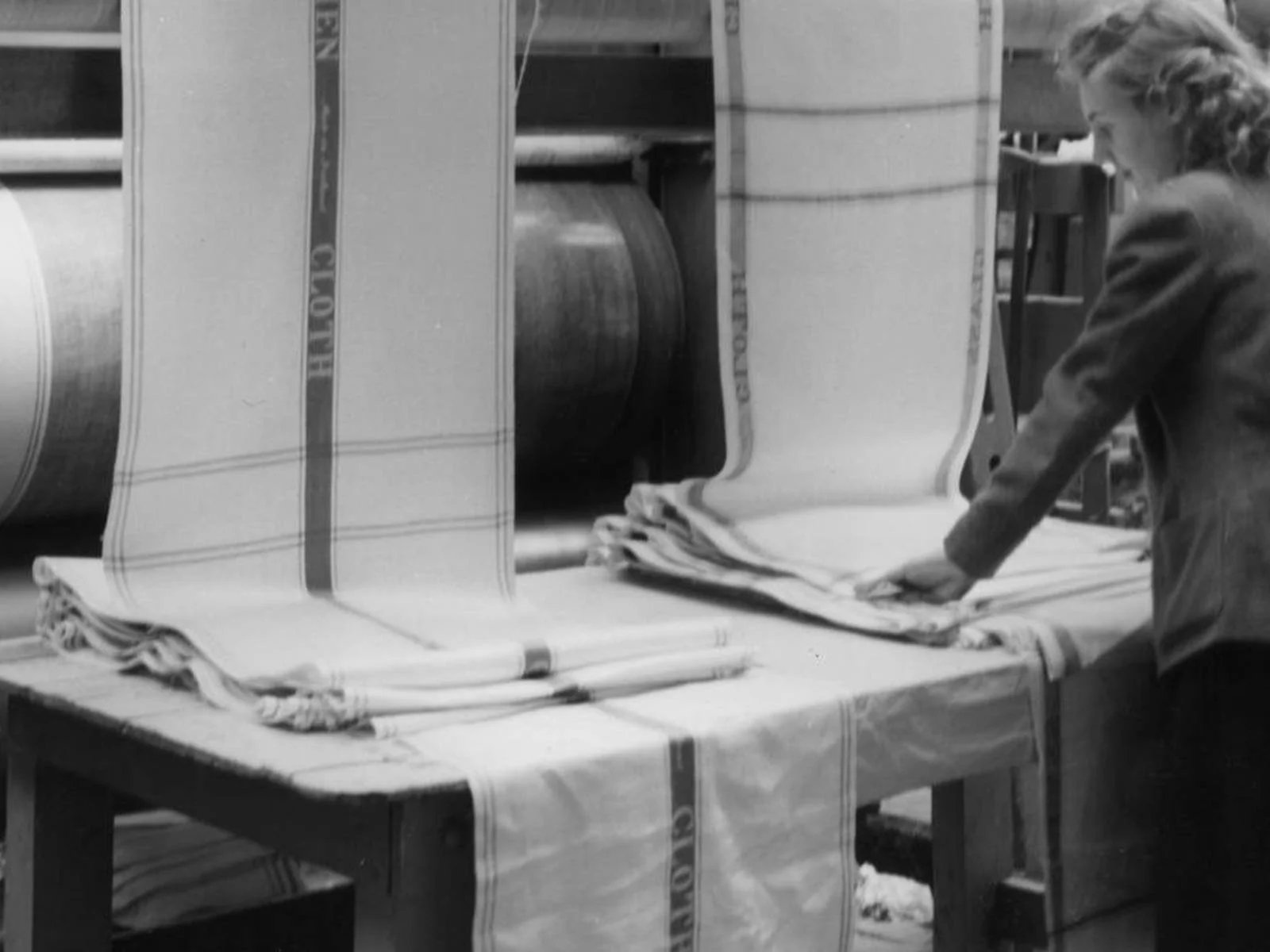Richard Malone, image supplied.
Here are some questions for you: How much is enough? How can creatives incorporate the idea of sufficiency in their output? If you make physical objects, what does it really mean to be sustainable in your practice? And, how can you, as my guest this week, Richard Malone, puts it, "do your own thing and stick to it" in the context of fashion's relentless push for newness?
Also, where does class and privilege play into all this? Does Fashion with a capital ‘F’ actually want to be more inclusive and welcoming? Or is all the talk of breaking down the barriers just lipservice? The fact is: many of the people who “make it” in fashion have an had a head start. You only have to look at the current obsession with Gen Z nepo babies. Let's not pretend the playing field is level.
Richard Malone is London-based, queer Irish fashion designer, artist and maker, who makes to order and is known for his exquisite sculptural draping. He used to show at LFW as part of Fashion East. He studied at St Martins, has won a bunch of prizes, and his work is held in the collections of major art museums. But Richard an anti-establishment designer whose work challenges a system that's built on unfair advantages.
A candid conversation about everything from colonisation and the loss of Irish craft traditions, to what fashion shows are really for. A treat for your brain as well as your ears!
NOTES
ABOUT RICHARD Richard Malone is a cross-disciplinary artist and designer, whose work features in some of the world’s most prestigious museum collections including London’s V&A, MOMA in New York, and the National Gallery of Victoria in Melbourne. He studied womenswear at Central Saint Martins, graduating in 2014, the same year as Richard Quinn, and won LVMH Grand Prix Scholarship in his final year. In 2020, he won the Woolmark Prize.
One of his teachers was the Aussie-born HOWARD TANGYE, who lectured CSM for 35 years, including 16 as head of BA Womenswear. Tangye tutored the likes of John Galliano, Stella McCartney and Hussein Chalayan.
Richard showed at LFW as part of FASHION EAST in 2016. Reported Dazed at the time, “His SS16 collection used the shape of his mother’s Argos uniform as a key reference, and the patterns from her old cookbooks to inform its embellishments. For more on Fashion East, listen to Episode 196 with Dr NOKI.
SLOW APPROACH “We don’t really do seasonal collections, so they’re always just titled at the date that they’re completed,” he told Vogue, in 2021.
DESIGN DISTRICT is London's “first permanent, purpose-built workspace for the creative industries. 16 buildings by eight pioneering architects, one minute from North Greenwich Underground station.” Discover here. Clare mentions the MATTY BOVAN Ribbons exhibition at the NOW GALLERY in the precinct. Richard’s exhibition “Rinse, Repeat” showed at the gallery in 2018.
THE TRUTH ABOUT FASHION SHOWS “Fashion is a $1.8 trillion industry. But as macro-economic uncertainties continue, fashion weeks are increasingly reliant on large corporations, who sponsor entire weeks, emerging designer shows and transport for attendees. It’s a risky game if they pull out.” Read more on Vogue Business.
Business of Fashion tells it like it is: “The logistics of putting on a show can be a stressor on an emerging brand’s not-yet-mature business; but, for many, the cost — both financial and emotional — is worth it.”
Also, this.
ICYMI: The last couple of years have seen fashion obsessing over Y2K Britney. For evidence, see here, and here. Heat is a British celeb gossip mag. Read about “the bubble gum mysogyny of 2000s pop culture” on Vox here.
PEACOCKING, according to the Cambridge Dictionary, is behaviour by men that shows they are very proud of their appearance. Bless. Want tips? Try this.
Focusing on MAKING has more class. Richard says, "to quietly do your own thing is very rare. It's also an act of resistance.” To what? Excess, course. All hail the new era of SUFFICIENCY. Interestingly, all major religions are critical of excessive materialism. Here’s a nice article connecting sufficiency with the good life.
IRELAND
Richard grew up in rural WEXFORD in the south east of Ireland. County Wexford was the centre of the 1798 rebellion against British rule.
TEXTILE TRADITIONS Early forms of wool spinning go back 6000 years to Neolithic times & Ireland has a long tradition of tweed hand weaving. This thriving industry was almost completely wiped out by the Great Famine but some places managed to continue the craft, most notably county Donegal. Via The Irish Store.com (recommended: their meet-the-maker vids).
“So important were the skills of weaving in early Ireland that the Brehon Laws, dating back to the 7th and 8th centuries, stipulated, in case of a divorce, a wife should keep her spindles, weaver’s reeds and yarn as part of her entitlement. Irish tweed, wool, linen and lace then became key exports and a big draw for tourists eager to bring some heritage home.” Read the rest here. In the late C17th, the British imposed restrictive laws on he export of Irish wool. Weavers of Ireland has a great explainer.
IRISH LINEN is famous for its superior quality and long heritage. According to the Irish Linen Centre at the Lisburn Museum: “By the C11th flax was being cultivated in Ireland and linen used for clothing. From this period, up until the 17th century, linen was woven on narrow looms. This cloth was known as bandle linen …and throughout the 14th and 15th centuries there was a growing trade in Irish linen yarn. … The Irish linen industry, as we know it today, owes its origins to the late 17th century. The Huguenots were important. They arrived in Ireland following the revocation of the Edict of Nantes in 1685, and many settled in Lisburn. They brought their skills in weaving and finishing linen. Louis Crommelin (1652-1727), who established a weaving factory at Bridge Street, Lisburn is perhaps the most famous. He was appointed ‘Overseer of the Royal Linen Manufacture of Ireland in 1699, and is popularly known as the ‘founder’ of the Irish linen industry.” More here.
FAMILIAR STORY: “With the proliferation of cheaply produced man-made and synthetic fibres throughout the 20th century, flax production in Ireland steadily declined. From around 1950 onwards, most flax fibres used in the production of Irish linen have been produced in northern Europe.”
The book Richard mentions is We Don't Know Ourselves by FINTAN O'TOOLE.
Clare mentions the falasy that only at the epicentres does the conseqjuention happen - not true! ORMSTON HOUSE is a “cultural resource centre” in Limerick, Ireland. They say: “Ormston House is a meeting place for the arts in the heart of Limerick City. Our programme is co-designed with artists and citizens, resulting in community partnerships, multi-annual projects, and cultural events that are responsive to the city and its context. We have developed a participatory model to connect curatorial practice with local knowledge and activism.” Discover here.
““[Malone’s] sculptures and installations suggest a sense of movement and theatre – some appear to be alive, captured in elegant postures or in suspended mischief. “”
Installation view of Figures by Richard Malone at Ormston House. Photo by Jed Niezgoda.
UNIVERSAL BASIC INCOME In October 2022, Ireland introduced a trial ARTIST’s SUPPORT WAGE paying “2,000 artists and creative workers weekly checks of €325 as part of the culture ministry’s new basic income pilot program. Aiding creatives in their recovery from the economic effects of the pandemic was the impetus for the three-year initiative, but at stake is something bigger: a new and rather radical model for how society values artists’ labor.” As part of the program, the participants, chosen at random from 8,200 applicants, were asked after six months, to report on “on how their lives have been impacted by the grant money, including its effect on personal expenses, working conditions, time usage, and health.” Read more on Artnet Predicatably, some people are losing their minds over this, while some think it’s a grand idea. More on NYT.
Eileen Gray
EILEEN GRAY was an Irish modernist, furniture maker and designer. “Born in Enniscorthy, County Wexford, Ireland in 1878, Gray spent her childhood in London and was among the first women to be admitted to the Slade, where she took up painting in 1898 before undergoing an apprenticeship in a London lacquer workshop. The experience she gained in working in this highly specialised medium was to influence her profoundly when she moved to Paris in 1902. After further training in lacquer work and cabinet making, she quickly established herself as one of the leading designers of the lacquered screens and decorative panels so beloved by the followers of art deco, and even managed to cause a riot by showing a stark white lacquered boudoir at the 14th Salon des Artistes Décorateurs in 1923.” Read the rest on EileenGray.co.uk
Richard recently curated a travelling exhibition of contemporary visual art inspired by Gray, Making and Momentum - which first opened in Roquebrune, France, featuring the likes of ceramicist Sarah Flynn, abstract painter Mainie Jellett and Venice Biennale contributor Niamh O’Malley.
“The exhibition is in celebration of Gray's phenomenal global influence across artistic disciplines - from weaving and rug making to metalwork and painting. Each artist and artisan has been selected for their multidisciplinary and experimental approach to making.” Via National Museum of Ireland.
Read all about it in Wallpaper magazine.








